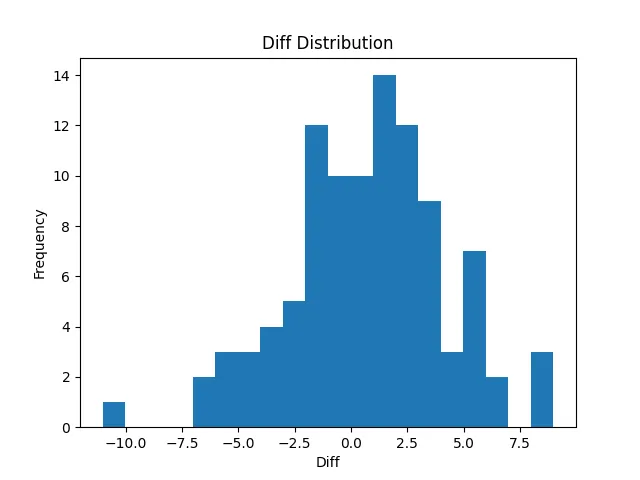请注意,本文编写于 495 天前,最后修改于 495 天前,其中某些信息可能已经过时。
目录
问题描述
现有一个较为复杂的函数接受3个参数返回一个数,希望用神经网络拟合该函数
该复杂函数暂定为
pythondef fun(x1,x2,x3):
# return x1+x2+x3+random.random()*0.1
return (np.sin(x1) * np.cos(x2) + np.log1p(x3**2))*10 + np.random.normal(0, 0.1)
应该足够复杂了,写入data.csv备用
csvx1,x2,x3,y 8.444218515250482,7.579544029403024,4.20571580830845,31.49327078172624 2.5891675029296337,5.112747213686085,4.049341374504143,30.589961578798203 7.837985890347726,3.0331272607892745,4.765969541523559,21.840855541786173 5.833820394550312,9.081128851953352,5.046868558173903,36.719751437665835 2.8183784439970383,7.558042041572239,6.183689966753317,37.651338224836 2.5050634136244057,9.097462559682402,9.827854760376532,40.34142256836198 ...
模型构建
构建一个8层的网络,第一层有三个神经元,分别接受三个输入,最后一层有一个神经元,用于输出。中间6层为隐藏层,每层有128个神经元
pythonimport torch
import torch.nn as nn
class SimpleNN(nn.Module):
def __init__(self):
super(SimpleNN, self).__init__()
self.fc1 = nn.Linear(3, 128)
self.fc2 = nn.Linear(128, 128)
self.fc3 = nn.Linear(128, 128)
self.fc4 = nn.Linear(128, 128)
self.fc5 = nn.Linear(128, 128)
self.fc6 = nn.Linear(128, 128)
self.fc7 = nn.Linear(128, 1)
self.dropout = nn.Dropout(0.5) # Dropout with 50% probability
self.leaky_relu = nn.LeakyReLU(0.01) # Leaky ReLU with negative slope of 0.01
def forward(self, x):
x = self.leaky_relu(self.fc1(x))
x = self.dropout(x) # Apply dropout
x = self.leaky_relu(self.fc2(x))
x = self.dropout(x) # Apply dropout
x = self.leaky_relu(self.fc3(x))
x = self.dropout(x) # Apply dropout
x = self.leaky_relu(self.fc4(x))
x = self.dropout(x)
x = self.leaky_relu(self.fc5(x))
x = self.dropout(x)
x = self.leaky_relu(self.fc6(x))
x = self.fc7(x)
return x
模型训练
导入所需要的库
pythonimport pandas as pd # 导入 pandas 库,用于数据处理
import numpy as np # 导入 numpy 库,用于数值计算
import torch # 导入 PyTorch 库,用于构建和训练深度学习模型
import torch.nn as nn # 导入 PyTorch 的神经网络模块
import torch.optim as optim # 导入 PyTorch 的优化模块
from sklearn.model_selection import train_test_split # 导入 sklearn 的数据集划分模块
from sklearn.preprocessing import StandardScaler # 导入 sklearn 的标准化模块
import matplotlib.pyplot as plt # 导入 matplotlib 库,用于绘图
设置pytorch使用cuda
python# 检查是否有可用的 GPU
device = torch.device('cuda' if torch.cuda.is_available() else 'cpu') # 如果有 GPU 可用则使用 GPU,否则使用 CPU
print(f'Using device: {device}') # 打印使用的设备
加载数据
从前面的data.csv中读取数据用于训练,数据应被划分为训练集和测试集
python# 1. 加载和准备数据
data = pd.read_csv('data.csv') # 读取 CSV 文件中的数据
X = data.iloc[:, :-1].values # 取出数据的前几列作为特征
y = data.iloc[:, -1].values # 取出数据的最后一列作为标签
# 将数据集划分为训练集和测试集,测试集占总数据的 20%
X_train, X_test, y_train, y_test = train_test_split(X, y, test_size=0.2, random_state=42)
训练数据应该被标准化,这样训练的效果比较好。标准化的均值和方差应该保存到模型中,便与预测时使用
pythonscaler = StandardScaler() # 初始化标准化对象
X_train = scaler.fit_transform(X_train) # 对训练特征数据进行标准化
X_test = scaler.transform(X_test) # 对测试特征数据进行标准化
scaler_params = {
'mean': scaler.mean_.tolist(),
'scale': scaler.scale_.tolist()
}
y_mean = y_train.mean()
y_std = y_train.std()
y_params = {
'mean': y_mean,
'std': y_std
}
读出的数组应该从内存中转移到显存中,才能使用cuda加速计算
python# 将 numpy 数组转换为 PyTorch 的张量,并将其移动到指定的设备(CPU 或 GPU)
X_train = torch.tensor(X_train, dtype=torch.float32).to(device)
X_test = torch.tensor(X_test, dtype=torch.float32).to(device)
y_train = torch.tensor(y_train, dtype=torch.float32).view(-1, 1).to(device) # 将标签数据转换为二维张量
y_test = torch.tensor(y_test, dtype=torch.float32).view(-1, 1).to(device) # 将标签数据转换为二维张量
导入模型
python# 2. 定义模型
from model import SimpleNN # 从 model 模块导入 SimpleNN 类
model = SimpleNN().to(device) # 实例化模型,并将模型移动到指定的设备
损失函数和优化器
python# 3. 定义损失函数和优化器
criterion = nn.SmoothL1Loss() # 定义均方误差损失函数
optimizer = optim.Adam(model.parameters(), lr=0.001) # 定义 Adam 优化器,学习率为 0.001
训练模型
模型的训练分为轮次和批量,每一轮从总数据中取出一个批次的数据进行训练
python# 4. 训练模型
num_epochs = 10000 # 训练轮数
batch_size = 30000 # 批量大小
losses = [] # 用于记录每个 epoch 的损失
for epoch in range(num_epochs): # 遍历每个 epoch
permutation = torch.randperm(X_train.size()[0]) # 生成一个随机排列的索引,用于打乱训练数据
epoch_loss = 0 # 初始化当前 epoch 的总损失
for i in range(0, X_train.size()[0], batch_size): # 遍历每个批量
optimizer.zero_grad() # 清零梯度
indices = permutation[i:i + batch_size] # 获取当前批量的索引
batch_x, batch_y = X_train[indices], y_train[indices] # 根据索引获取当前批量的数据和标签
outputs = model(batch_x) # 前向传播,计算模型输出
loss = criterion(outputs, batch_y) # 计算损失
loss.backward() # 反向传播,计算梯度
optimizer.step() # 更新模型参数
epoch_loss += loss.item() # 累加当前批量的损失到 epoch 总损失中
losses.append(epoch_loss) # 记录当前 epoch 的总损失
if (epoch + 1) % 100 == 0: # 每 100 个 epoch 打印一次损失
#计算最近100次的平均损失
recent_losses = losses[-100:]
recent_loss = sum(recent_losses) / len(recent_losses)
print(f'Epoch [{epoch+1}/{num_epochs}], Loss: {recent_loss:.4f}')
然后保存模型
pythontorch.save({
'model_state_dict': model.state_dict(),
'scaler_params': scaler_params,
'y_params': y_params
}, 'model_with_scaler.pth')
print('模型已保存') # 打印模型保存信息
评估模型
python# 5. 评估模型
model.eval() # 切换到评估模式(禁用 Dropout 和 BatchNorm)
with torch.no_grad(): # 禁用梯度计算
predictions = model(X_test) # 使用测试数据进行预测
test_loss = criterion(predictions, y_test) # 计算测试损失
print(f'Test Loss: {test_loss.item():.4f}') # 打印测试损失
# 6. 可视化训练过程(可选)
plt.plot(range(num_epochs), losses) # 绘制训练损失曲线
plt.xlabel('Epoch') # x 轴标签
plt.ylabel('Loss') # y 轴标签
plt.title('Training Loss') # 图表标题
plt.show() # 显示图表
使用模型进行预测
首先应该加载模型文件,同时读取标准化参数
pythonmodel = SimpleNN() # 重新创建模型实例
# model.load_state_dict(torch.load('model.pth'))
# model.eval() # 切换到评估模式
# print('模型已加载')
# 加载模型和标准化参数
checkpoint = torch.load('model_with_scaler.pth')
model.load_state_dict(checkpoint['model_state_dict'])
scaler_params = checkpoint['scaler_params']
y_params = checkpoint['y_params']
mean = torch.tensor(scaler_params['mean'], dtype=torch.float32)
scale = torch.tensor(scaler_params['scale'], dtype=torch.float32)
y_mean = torch.tensor(y_params['mean'], dtype=torch.float32)
y_std = torch.tensor(y_params['std'], dtype=torch.float32)
print('模型已加载')
print('y_mean:', y_mean)
print('y_std:', y_std)
print('mean:', mean)
print('scale:', scale)
可以使用data.csv中的数据(即训练数据)评估模型效果
pythonwith torch.no_grad():
#读取data.csv
import pandas as pd
data = pd.read_csv('data.csv')
#最后一列为真实数据
y_test = data.iloc[:, -1].values
#前面的列为特征
X_test = data.iloc[:, :-1].values
# 将数据转换为张量
X_test = torch.tensor(X_test, dtype=torch.float32)
# 使用保存的参数标准化测试数据
X_test = (X_test - mean) / scale
predictions = model(X_test)
# 反标准化预测结果
# predictions = predictions * y_std + y_mean
#保存结果到csv
result = pd.DataFrame(columns=['predictions', 'y_test'])
result['predictions'] = predictions.view(-1).numpy()
result['y_test'] = y_test
result.to_csv('result.csv', index=False)
#计算平均偏差
y_test = torch.tensor(y_test, dtype=torch.float32).view(-1, 1)
diff = predictions - y_test
diff_mean = torch.mean(diff)
diff_std = torch.std(diff)
print('平均偏差:', diff_mean)
print('偏差标准差:', diff_std)
#绘制偏差分布图
import matplotlib.pyplot as plt
plt.hist(diff.numpy(), bins=20)
plt.xlabel('Diff')
plt.ylabel('Frequency')
plt.title('Diff Distribution')
plt.savefig('diff_distribution.png')
plt.show()
print('结果已保存')
这是输出的结果,可见训练效果非常的不错
csvpredictions,y_test 29.141756,31.49327078172624 27.42849,30.589961578798203 21.874674,21.840855541786173 37.611496,36.71975143766584 34.063713,37.651338224836 43.536583,40.34142256836198 18.55039,14.77899637657035 35.315445,30.780483076989874 21.361193,24.6043033224426 47.960533,47.19596821098634 27.967197,27.695992998712587 9.5465355,7.156074135170297 37.481857,37.21442771729388 38.555557,36.3167101316844 21.846512,19.3475078868978 32.653824,32.948488401020384 35.61287,35.34606849875347 15.098193,17.392378895548934 ...
可以使用预先的函数评估模型效果
pythonwith torch.no_grad():
#随机生成数据
random.seed(1)
test_list = []
for i in range(100):
x1 = random.random()
x2 = random.random()
x3 = random.random()
test_list.append([x1, x2, x3])
X_test = torch.tensor(test_list, dtype=torch.float32)
# 使用保存的参数标准化测试数据
X_test = (X_test - mean) / scale
predictions = model(X_test)
y=[]
for i in range(100):
x1, x2, x3 = test_list[i]
y.append(fun(x1, x2, x3))
#保存结果到csv
result = pd.DataFrame(columns=['predictions', 'y_test'])
result['predictions'] = predictions.view(-1).numpy()
result['y_test'] = y
result.to_csv('result_random.csv', index=False)
#计算平均偏差
y=torch.tensor(y, dtype=torch.float32).view(-1, 1)
diff=predictions-y
diff_mean=torch.mean(diff)
diff_std=torch.std(diff)
print('平均偏差:',diff_mean)
print('偏差标准差:',diff_std)
#绘制偏差分布图
import matplotlib.pyplot as plt
plt.hist(diff.numpy(), bins=20)
plt.xlabel('Diff')
plt.ylabel('Frequency')
plt.title('Diff Distribution')
plt.savefig('diff_distribution.png')
plt.show()
print('结果已保存')
总体而言拟合效果还可以,但是有些数据偏差有些大
csvpredictions,y_test 5.1833587,5.599647152405113 9.0166445,3.98510360599354 2.0647216,4.268379343665554 3.0109725,1.9694396684840318 12.234534,8.670199066521533 12.691338,12.797512945010594 9.277757,7.755939940065803 2.3095508,4.241482044305519 4.990645,2.0843641577440524 2.058435,4.140842339186644 3.2915149,2.595814142473651 5.1719728,4.403141646741202 9.764646,9.646518740649316 6.6177983,6.488145515130112 ...
绘制的偏差分布画图如下

怀疑出现了过拟合
本文作者:GBwater
本文链接:
版权声明:本博客所有文章除特别声明外,均采用 BY-NC-SA 许可协议。转载请注明出处!
目录